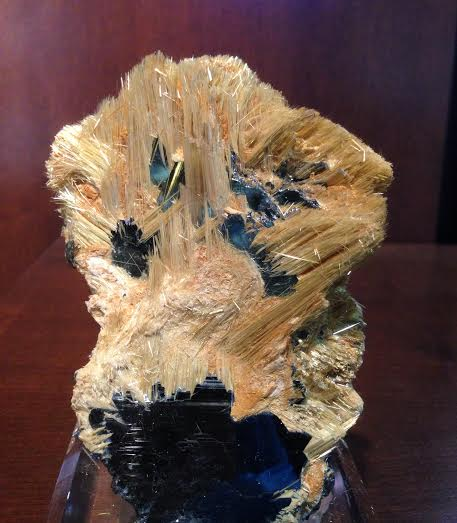Rutile is an important economic mineral as it is a major ore of the titanium. It is usually a deep reddish brown or black color and has a metallic to adamantine luster.
Rutile usually forms long prismatic crystals, often with heavy striations, but it can also form as needle like crystals (called acicular habit) in an incredible golden color. Rutile is mostly pure titanium oxide, but the rare earth elements niobium and tantalum can substitute the titanium in the chemical formula. Rutile is polymorphous with the minerals anatase and brookite, meaning they all have the chemical composition TiO2 but have different crystal properties.
Rutile is most aesthetically interesting when it occurs as inclusions in other minerals. Rutile causes the beautiful play-of-light seen in star rubies and sapphires. Rutile grows along the crystallographic axis of the hexagonal ruby, and when cut into a cabochon (a polished, dome shaped cut), three bands of light can be seen, forming a perfectly symmetrical six-sided star when turned in the light. The movement of the star in the light is called “asterism.” Golden rutile needles can also be included in quartz crystals.This is appropriately called rutilated quartz and is one of the finest pairings of minerals in the world.
See fantastic examples of rutile and rutilated quartz in the Dice Mineralogical Museum located on the first floor of North Hall, open from 12:30 to 4 p.m. on Wednesdays, Thursdays and Fridays.







